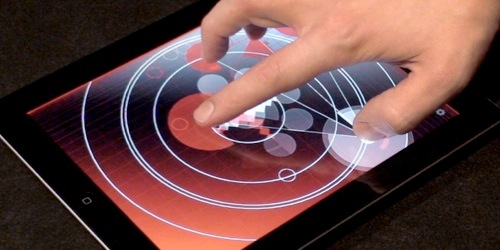Synth City
My first introduction to the synth world was around 1974. Patrick Gleeson had two Moog modular systems* sitting in his studio, Different Fur Trading Company.** I had only read about such beasts as they cost tens of thousands of dollars. A Moog was completely hand-wired, huge and heavy. Wendy Carlos*** had recorded a ground-breaking album using the Moog in 1968, Switched-on Bach. That album forced people to accept that a synthesizer was a serious musical instrument. I took a few lessons at the studio but found it was far too technical for me.

The problem that the Moog was way out of the financial reach of most people, was tackled by other innovative synth makers. After some serious lobbying on my part, I convinced Cryptic Corporation to part with about $1200 (mid-'70's dollars at that) to purchase an all-in-one device, the ARP Odyssey. I still have it and last recorded with it in 2008. Loser ⩰ Weed, was the first experiment with the device.

When a company in Santa Cruz, California named E-Mu**** showed me a keyboard they had built called an Emulator, I knew that life would never be the same again. The Emulator allowed a person to play back actual sound samples. The thing that many toys can easily do today was wildly revolutionary in 1982. The Residents bought two of them at $10,000 each. The Emulator is what made it possible for The Residents to tour with The Mole and The 13th Anniversary shows as well as changing their entire sound on their recordings. The first record of (almost) only Emulator was The Tunes of Two Cities.

There had been much written about a computer language called MIDI (Musical Instrument Digital Interface) in the early '80's but computers were expensive. The basic idea was that programming code was typed into the computer and it used the data to play the keyboard, usually faster and with fewer errors than a human. When The Cryptic Corporation upgraded computers in the office, I grabbed their old Apple II and bought MIDI software.
When Snakefinger died in 1987, Cryptic started organizing a wake for him which included a Residents performance, and so I decided to make that 20 minute show MIDI-driven. Snakey Wake from 1987 is The Residents' historic first MIDI recording.

In the 25 years that has come since, the tools have not radically changed, but they did become more powerful and easier to use. Electronic music is no longer a category, it is an everyday reality for everyday music. What has changed is that electronic music made its way into the hands of the general public and now there is no reason that anyone cannot experiment and make music if they wish.
Codgers on the Moon, I am pleased to say, was developed and played incorporating two iPads. True, one iPad was controlling a powerful Mac, but the other was an independent sound source and an interactive touch screen. Several iPad programs were used including my favorites, the GEO SYNTH and TC-11.
GEO

TC-11

The future looks good for the synth. As long as people keep coming up with new technology, I intend to keep exploring how to incorporate it into The Residents' recordings.
*One of the Moogs belonged to Mothers of Invention keyboardist Don Preston. This same system would later be housed in The Residents' studio. It was used by Don on the Eskimo album recordings. The other, as I recall, belonged to electronic music pioneers, Beaver and Krause. The two were introduced to each other by Jac Holzman who was looking for synthesists for an album he was producing, Zodiac: Cosmic Signs. Much later Jac Holzman would executive produce River of Crime for The Residents.
**The Residents would later record The King & Eye at Different Fur Studios.
***Wendy Carlos and The Residents would later become label mates on the tiny East Side Digital label in Minneapolis.
****E-Mu was a very small company and the staff became friends with us quickly. Their super-secret testing room was called "The Residents" room. When The Residents opened New Music America in Washington DC with the Mole Show in 1983, E-Mu saved the show by shipping an Emulator from Santa Cruz for the performance.
Though I personally did not play them, I did want to mention that in addition to MOOG and ARP, we used synthesizers from SERGE and BUCHLA on recordings and in performance.